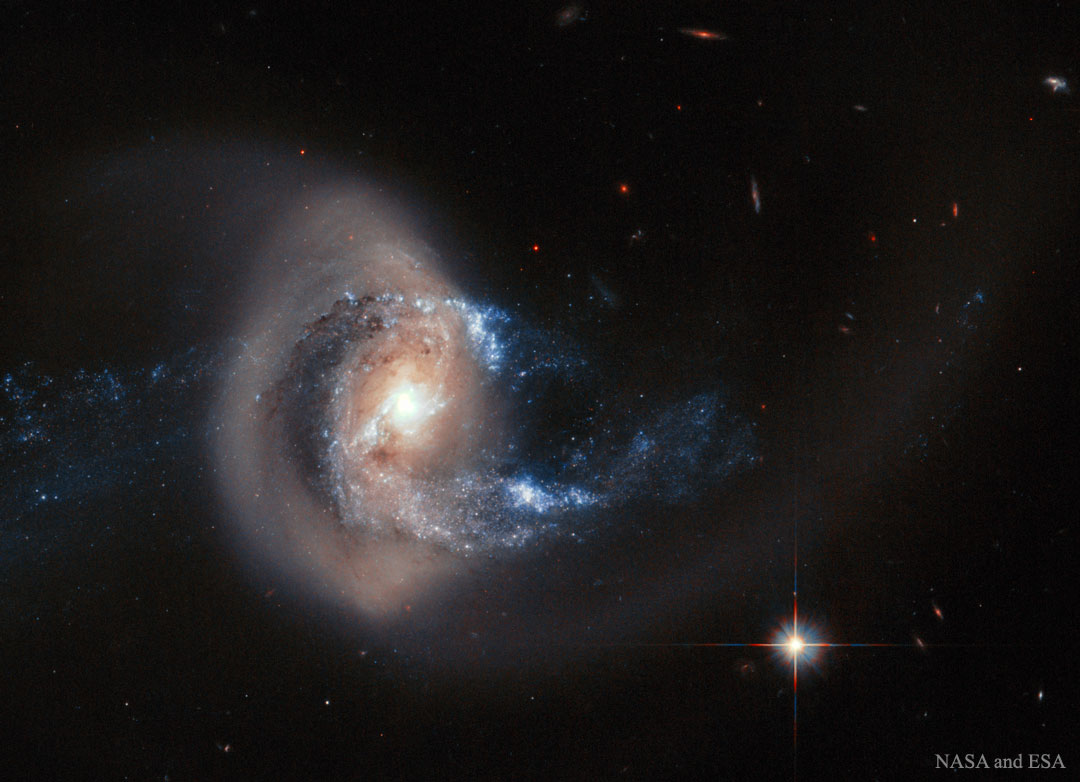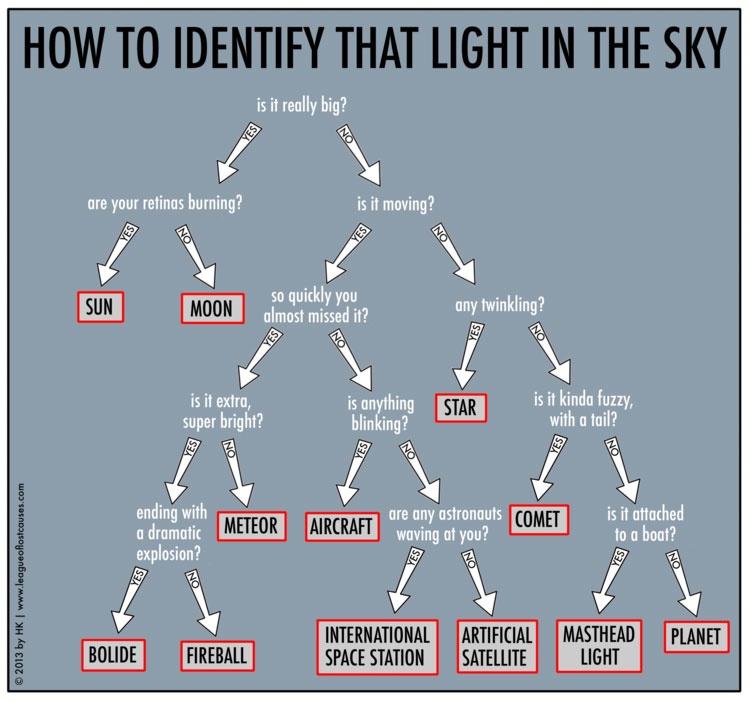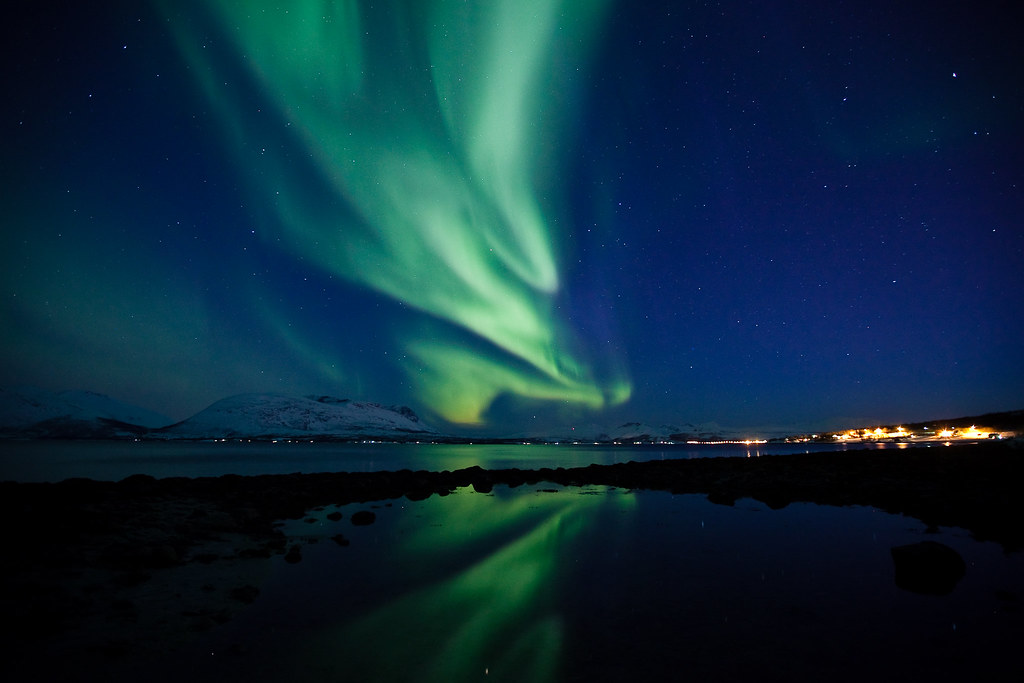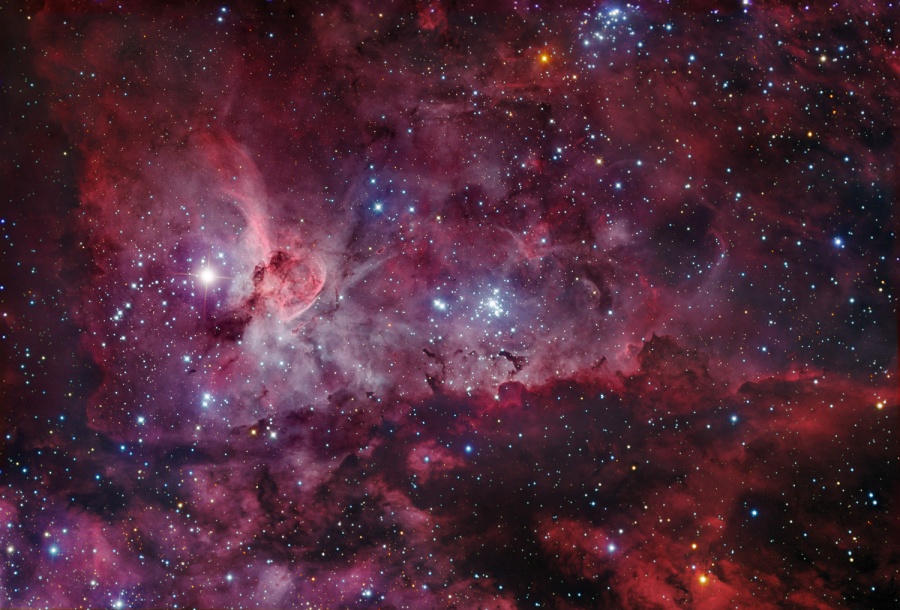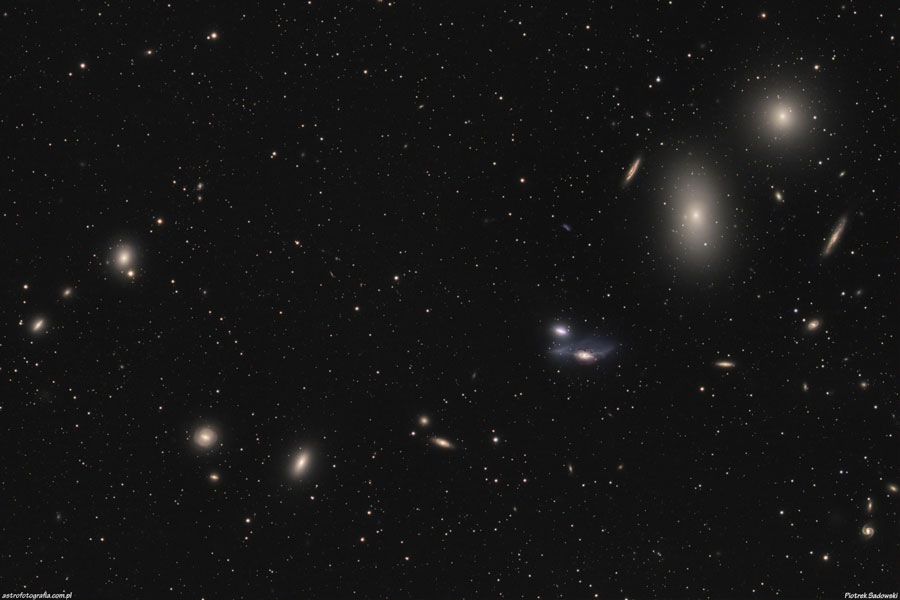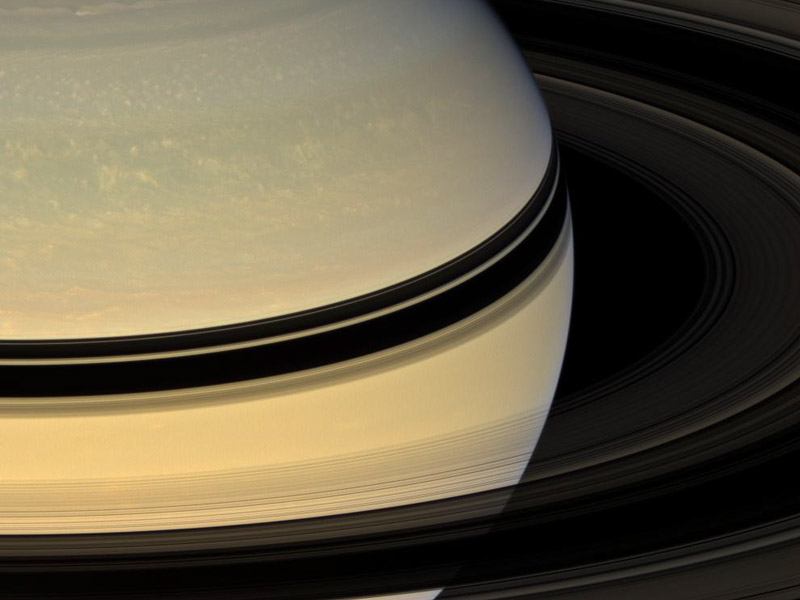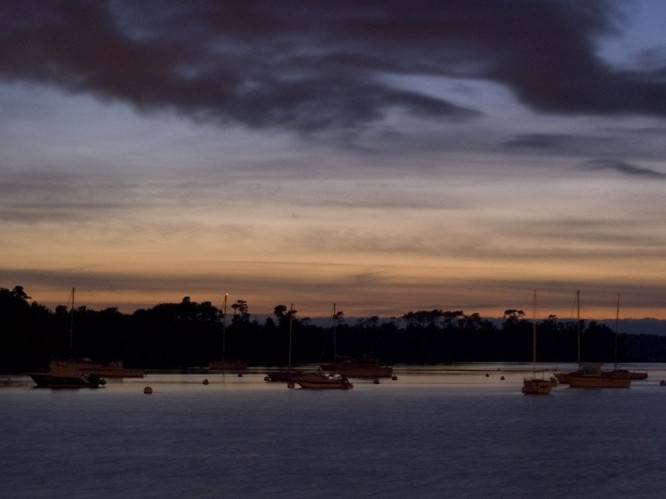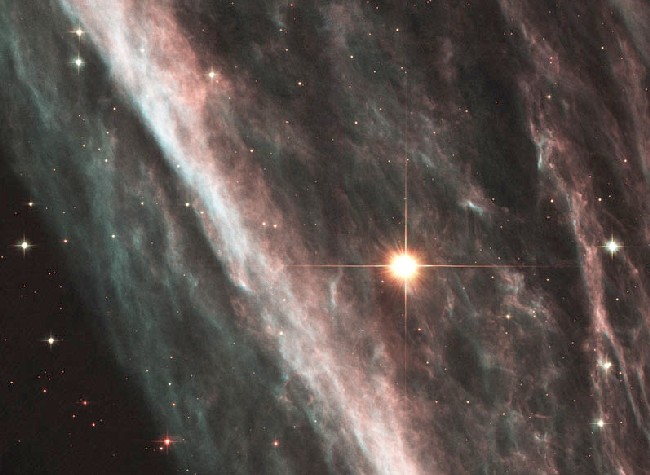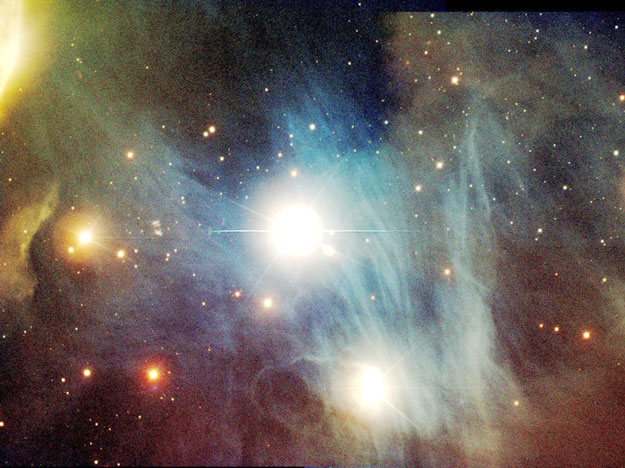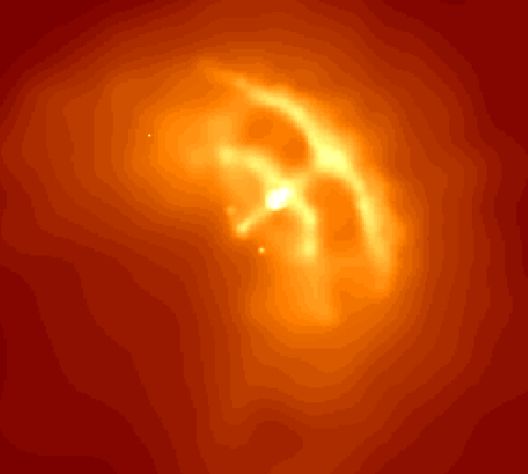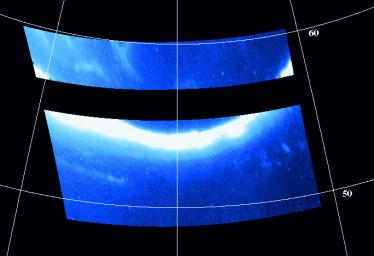| << Previous | Index | Next >> |
2015 Is this galaxy jumping through a giant ring of stars? Probably not. Although the precise dynamics behind the featured image is yet unclear, what is clear is that the pictured galaxy, NGC 7714, has been stretched and distorted by a recent collision with a neighboring galaxy. This smaller neighbor, NGC 7715, situated off to the left of the featured frame, is thought to have charged right through NGC 7714. Observations indicate that the golden ring pictured is composed of millions of older Sun-like stars that are likely co-moving with the interior bluer stars. In contrast, the bright center of NGC 7714 appears to be undergoing a burst of new star formation. NGC 7714 is located about 100 million light years away toward the constellation of the Fish (Pisces). The interactions between these galaxies likely started about 150 million years ago and should continue for several hundred million years more, after which a single central galaxy may result.
2014 What is that light in the sky? Perhaps one of humanity's more common questions, an answer may result from a few quick observations. For example -- is it moving or blinking? If so, and if you live near a city, the answer is typically an airplane, since planes are so numerous and so few stars and satellites are bright enough to be seen over the din of artificial city lights. If not, and if you live far from a city, that bright light is likely a planet such as Venus or Mars -- the former of which is constrained to appear near the horizon just before dawn or after dusk. Sometimes the low apparent motion of a distant airplane near the horizon makes it hard to tell from a bright planet, but even this can usually be discerned by the plane's motion over a few minutes. Still unsure? The above chart gives a sometimes-humorous but mostly-accurate assessment. Dedicated sky enthusiasts will likely note -- and are encouraged to provide -- polite corrections.
2013
2012 As its June 6 2012 transit begins Earth's sister planet crosses the edge of the Sun in this stunning view from the Hinode spacecraft. The timing of limb crossings during the rare transits was used historically to triangulate the distance to Venus and determine a value for the Earth-Sun distance called the astronomical unit. Still, modern space-based views like this one show the event against an evocative backdrop of the turbulent solar surface with prominences lofted above the Sun's edge by twisting magnetic fields. Remarkably, the thin ring of light seen surrounding the planet's dark silhouette is sunlight refracted by Venus' thick atmosphere.
2011
2010 Even a quiet Sun can be a busy place. And over the deep Solar Minimum of the past few years, our Sun has been unusually quiet. The above image, taken last week in a single color of light called Hydrogen Alpha and then false colored, records a great amount of detail of the simmering surface of our parent star. The gradual brightening towards the Sun's edge in this color-inverted image, called limb darkening, is caused by increased absorption of relatively cool solar gas. Just over the Sun's edges, several prominences are visible, while two prominences on the Sun's face are seen as light streaks just above and right of the image center. Two particularly active areas of the Sun are marked by dark plages. In contrast to recent quiet times, our Sun is moving toward Solar Maximum, and for years will likely appear much more active.
2009 Across the heart of the Virgo Cluster of Galaxies lies a striking string of galaxies known as Markarian's Chain. The chain, pictured above, is highlighted on the upper right with two large but featureless lenticular galaxies, M84 and M86. Prominent to their lower left is a pair of interacting galaxies known as The Eyes. The home Virgo Cluster is the nearest cluster of galaxies, contains over 2000 galaxies, and has a noticeable gravitational pull on the galaxies of the Local Group of Galaxies surrounding our Milky Way Galaxy. The center of the Virgo Cluster is located about 70 million light years away toward the constellation of Virgo. At least seven galaxies in the chain appear to move coherently, although others appear to be superposed by chance.
2008 What do Saturn's rings look like from the other side? From Earth, we usually see Saturn's rings from the same side of the ring plane that the Sun illuminates them. Geometrically, in the above picture taken in April by the robot Cassini spacecraft now orbiting Saturn, the Sun is behind the camera but on the other side of the ring plane. This vantage point, specifically 17 degrees above the ring plane, gives a breathtaking views of the most splendid ring system in the Solar System. Strangely, the rings have similarities to a photographic negative of a front view. The ring brightness as recorded from different angles indicates ring thickness and particle density of ring particles. Elsewhere, ring shadows can be seen on the sunlit face of Saturn, shown sporting numerous cloud structures in nearly true color.
2007 This immense ball of half a million stars older than the Sun lies over 30,000 light-years away. Cataloged as M3 (and NGC 5272), it is one of about 150 globular star clusters that roam the halo of our Milky Way Galaxy. Even in this impressively sharp image, individual stars are difficult to distinguished in the densely packed core, but colors are apparent for the bright stars on the cluster's outskirts. M3's many cool "red" giant stars take on a yellowish cast, while hotter giants and pulsating variable stars look light blue. A closer look at the deep telescopic view also reveals a host of background galaxies. Itself about 200 light-years across, the giant star cluster is a relatively bright, easy target for binoculars in the northern constellation Canes Venatici, The Hunting Dogs, and not far from Arcturus.
2006 This wide, detailed Spitzer Space Telescope view features infrared light from dust (red) and old stars (blue) in Andromeda, a massive spiral galaxy a mere 2.5 million light-years away. In fact, with over twice the diameter of our own Milky Way, Andromeda is the largest nearby galaxy. Andromeda's population of bright young stars define its sweeping spiral arms in visible light images, but here the infrared view clearly follows the lumpy dust lanes heated by the young stars as they wind even closer to the galaxy's core. Constructed to explore Andromeda's infrared brightness and stellar populations, the full mosaic image is composed of about 3,000 individual frames. Two smaller companion galaxies, NGC 205 (below) and M32 (above) are also included in the combined fields. The data confirm that Andromeda (aka M31) houses around 1 trillion stars, compared to 4 hundred billion for the Milky Way.
2005 This serene image of boats moored in the harbor of l'Île-Tudy, Bretagne, France was taken on June 1st, about an hour after sunset. It also features Venus, third brightest celestial object after the Sun and Moon. For casual skygazers, this month marks Venus' return to the evening sky as the brilliant 'star', shining low in the west-northwest shortly after sunset. In the picture, astrophotographer and APOD translator Laurent Laveder notes that Venus is easily mistaken for a light atop a sailboat's tall mast, giving the otherwise stunning celestial beacon an unremarkable appearance. Of course, a year ago Venus' appearance was quite remarkable. On June 8, 2004, Venus crossed the Sun's disk, the first transit of Venus since 1882. Late this week Venus shares the evening sky with the young crescent Moon, and will next transit the Sun on June 6, 2012.
2004 Did you see the transit? While some watched by webcast, sky gazers in Europe, the Middle East, Africa, and Asia were able to witness the complete 6 hour journey of Venus' silhouetted disk across the face of the Sun. As seen from North America, the much heralded Venus Transit of 2004 was nearing its final stages at sunrise yesterday in this telescopic image. The view looks across the Atlantic from Tybee Island near Savannah, Georgia, USA. In fact, many in eastern North America experienced a dramatic view of a perfect, dark, round Venus against a reddened Sun filtered by banks of low clouds. Ironically, the Sun takes on the appearance of a cloud covered planet itself as Venus marches toward the right through this dreamlike scene.
2003 At 500,000 kilometers per hour, a supernova shockwave plows through interstellar space. This shockwave is known as the Pencil Nebula, or NGC 2736, and is part of the Vela supernova remnant, an expanding shell of a star that exploded about 11,000 years ago. Initially the shockwave was moving at millions of kilometers per hour, but the weight of all the gas it has swept up has slowed it considerably. Pictured above, the shockwave moves from left to right, as can be discerned by the lack of gas on the left. The above region spans nearly a light year across, a small part of the 100+ light-year span of the entire Vela supernova remnant. The Hubble Space Telscope ACS captured the above image last October.
2002 A photogenic group of nebulae can be found toward Chamaeleon, a constellation visible predominantly in skies south of the Earth's equator. Celestial objects visible there include the blue reflection nebulas highlighted by thin dust surrounding the bright stars in the above image center. Toward the top and lower right, dark molecular clouds laced with thick dust block light from stars in the background. The parent molecular cloud Chamaeleon I is located about 450 light years from Earth.
2001 In December of 1972, Apollo 17 astronauts Eugene Cernan and Harrison Schmitt spent about 75 hours exploring the Moon's Taurus-Littrow valley while colleague Ronald Evans orbited overhead. Cernan and Schmitt were the last humans to walk or ride on the Moon - aided in their explorations by a Lunar Roving Vehicle. The skeletal-looking lunar rover was just over 10 feet long, 6 feet wide and easily carried astronauts, equipment, and rock samples in the Moon's low gravity (about 1/6 Earth's). In this picture, Cernan stands at the back of the rover which carried the two astronauts in lawn-chair style seats. An umbrella-shaped high gain antenna and TV camera are mounted in the front. Powered by four 1/4 horsepower electric motors, one for each wheel, this rover was driven a total of about 18 miles across the lunar surface. Its estimated top speed was a blazing 8 miles per hour.
2000 This stunning image from the orbiting Chandra X-ray Observatory is centered on the Vela pulsar -- the collapsed stellar core within the Vela supernova remnant some 800 light-years distant. The Vela pulsar is a neutron star. More massive than the Sun, it has the density of an atomic nucleus. About 12 miles in diameter it spins 10 times a second as it hurtles through the supernova debris cloud. The pulsar's electric and magnetic fields accelerate particles to nearly the speed of light, powering the compact x-ray emission nebula revealed in the Chandra picture. The cosmic crossbow shape is over 0.2 light-years across, composed of an arrow-like jet emanating from the polar region of the neutron star and bow-like inner and outer arcs believed to be the edges of tilted rings of x-ray emitting high energy particles. Impressively, the swept back compact nebula indicates the neutron star is moving up and to the right in this picture, exactly along the direction of the x-ray jet. The Vela pulsar (and associated supernova remnant) was created by a massive star which exploded over 10,000 years ago. Its awesome x-ray rings and jet are reminiscent of another well-known pulsar powered system, the Crab Nebula.
1999
1998 Europa's icy crust has many unusual features. Pictured above is part of Europa's southern hemisphere photographed by the Galileo spacecraft currently orbiting Jupiter. Europa is one of the largest moons of Jupiter, and is thought to have oceans of water underneath its ice-covered surface. Among many cracks and ridges appear dark cusp-shaped features running from the lower left toward the upper right. The origin of these features is not known for sure, but their shape is thought to indicate that large portions of Europa's crust move together, similar to tectonic motion of our Earth's crust.
1997 Do other planets have aurora? Terrestrial and spacecraft observations have found evidence for aurora on Venus, Mars, Jupiter, Saturn, Uranus, and Neptune. In the above false-color photograph, a good portion of an auroral ring was captured recently in optical light by the Galileo spacecraft in orbit around Jupiter. Auroral rings encircle a planet's magnetic pole, and result from charged particles spiraling down magnetic field lines. Although the surroundings near Jupiter are much different than Earth, the auroral rings appear similar.
1996 How did the astronauts get back from the Moon? The Lunar Module that landed two astronauts on the Moon actually came apart. The top part containing the astronauts carried additional rocket fuel which allowed it to blast away, leaving the bottom part on the Moon forever. The top part would later meet up with the Command Module and its astronaut pilot, which were continually orbiting the Moon. All would then return to Earth together. The above picture was taken by a robot TV camera left on the Moon by the crew of Apollo 16. The frame above captures the top part of the Lunar Module just at it was blasting off.
| << Previous | Index | Next >> |
